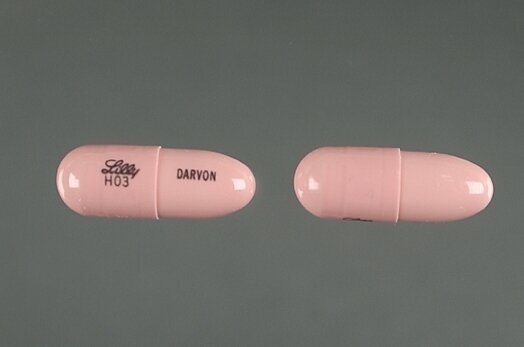
When the FDA pulled from the market the sometimes-deadly prescription painkiller propoxyphene (sold under the brand names Darvon and Darvocet in the U.S.), the agency was acting finally -- if belatedly -- in the public interest.
The medical community has expressed serious concerns over the drug for most of the 50 years it has been on the market. Not only is propoxyphene not very effective as a painkiller, but the drug is highly addictive and, most importantly, it can be toxic even at low levels.
This toxicity and the risk of causing abnormal heart rhythms have caused thousands of deaths in patients who took these medications.
So risky and dangerous is propoxyphene that the United Kingdom banned the drug in 2005 and the entire European Union followed suit in January of 2009.
But in this country, it was not until last week that the FDA finally pulled the plug on the brand-name propoxyphene drugs, Darvon and Darvocet, as well as their generic surrogates.
For thousands of Americans, the FDA's action comes decades too late. Back in 1978 the consumer group Public Citizen first petitioned U.S. regulators to remove the drug from the market. Public Citizen recognized that propoxyphene can cause a toxic metabolite to accumulate in the body. The organization further maintains that thousands of Americans may have died from the cardiac toxicity of the drug, which interrupts the electrical conduction to the heart.
Given the body of evidence, the 30-year old questions about propoxyphene, and the U.K.'s and European Union's decisions to ban the drug outright, we have to ask: what took the FDA so long to do right the right thing for American consumers?
Officially, the FDA said it needed more time to conduct a study about the drug's efficacy and safety. Their study found that even the recommended dose caused"significant changes to the electrical activity of the heart" which can "increase the risk for serious abnormal heart rhythms that have been linked to serious adverse effects, including sudden death."
That is a shocking admission.
Fifty-three years after approving the drug, the FDA and the multiple companies who have manufactured and sold it have only now discovered that using propoxyphene under normal conditions can cause sudden death.
The FDA eventually took the right action, but U.S. regulators continue to lag behind our European and British cousins when it comes to patient safety.
While there are many differences between the two drugs, there are striking similarities between propoxyphene and Vioxx. Both were used to treat pain conditions. Both caused severe cardiovascular complications. And both were subject to belated warnings from the FDA.
The FDA eventually estimated that Vioxx caused as many as 139,000 heart attacks during the five years the drug was on the market. We should hope that the estimates for propoxyphene, which the FDA approved back in 1957, will be far fewer.
Ed Blizzard is the founding partner of the renowned pharmaceutical litigation firm Blizzard, McCarthy & Nabers. For 25 years, he has been instrumental in some of the largest pharmaceutical injury verdicts and settlements in the country, including multidistrict litigation and mass tort cases including Ephedra, Dow Corning breast implant, Digitek, Sulzer hip implants, Baycol, ReNu and MoistureLoc. He served on the Negotiating Plaintiff's Committee for the Vioxx Multidistrict Litigation and helped negotiate a $4.85 billion settlement.